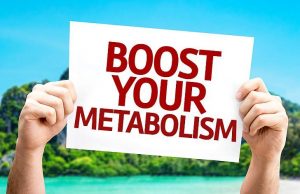If you’ve he ard that lactic acid is poison to your muscles, you wouldn’t be the first person to hear that. While the term lactic acid is tossed around in gyms everywhere, lactic acid is found only in sour milk. What the body produces is lactate. However, the two terms have become interchangeable when talking about fitness, even though in error. Lactate or as it is commonly called, lactic acid and your metabolism have a bond. While the muscles burn after a workout and lactate is in the muscles at the time, it’s not the cause of the burn.
ard that lactic acid is poison to your muscles, you wouldn’t be the first person to hear that. While the term lactic acid is tossed around in gyms everywhere, lactic acid is found only in sour milk. What the body produces is lactate. However, the two terms have become interchangeable when talking about fitness, even though in error. Lactate or as it is commonly called, lactic acid and your metabolism have a bond. While the muscles burn after a workout and lactate is in the muscles at the time, it’s not the cause of the burn.
There are two ways to power muscles.
Your muscles get their energy in two different ways; aerobically and anaerobically. Aerobically means with oxygen and anaerobically means without oxygen. During normal exercise, the aerobic method is used, but when it comes to high intensity exercise, the body switches to the anaerobic method. ATP—adenosine triphosphate—is the quick energy source normally used.
The body has to adjust when it needs even more energy.
When there’s a high demand for quick energy, the body breaks down ATP into ADP—adenosine diphosphate—plus a hydrogen proton or ion. Adding a hydrogen proton causes acidification. That acidification or acidosis burns, but the lactate isn’t the cause. Pyruvate molecules, which are produced near the end of glycolysis, gobble up the protons and produce lactate. That explains its presence. If you’re working at 85 percent of your maximum to keep up and creates the burn by leaving extra hydrogen ions or protons that create the acidic results. The creation of lactate actually helps prevent the burn, rather than create it.
Lactate is the connection between aerobic energy and anaerobic energy.
Lactate is metabolized more quickly and used for energy than glucose. One study by UC Berkley’s Dr. George Brooks using isotopes of glucose and lactate to trace them, shows that while it took glucose approximately thirty minutes for metabolization, lactate was quickly broken down in approximately five minutes. That made it more readily available for use.
- The lactate produced during exercise can be reused by the mitochondria for energy. It’s a constant cycle within the body to ensure all cells are fed and the mitochondria are kept burning.
- Lactate is always produced by the body during glycolysis, even when you’re resting and there’s more than enough oxygen for aerobic power. Some organs prefer burning it instead of glucose, such as the liver, heart and brain.
- Lactate not only serves as a fuel, it also stimulates the production of new mitochondria to fuel the cells.
- That euphoria you feel after exercise comes from norepinephrine is created in the forebrain. That area also controls appetite, focus and autonomic processes. The L-lactate may be the cause, since it stimulates the area, which in turn, releases the happy hormone.
